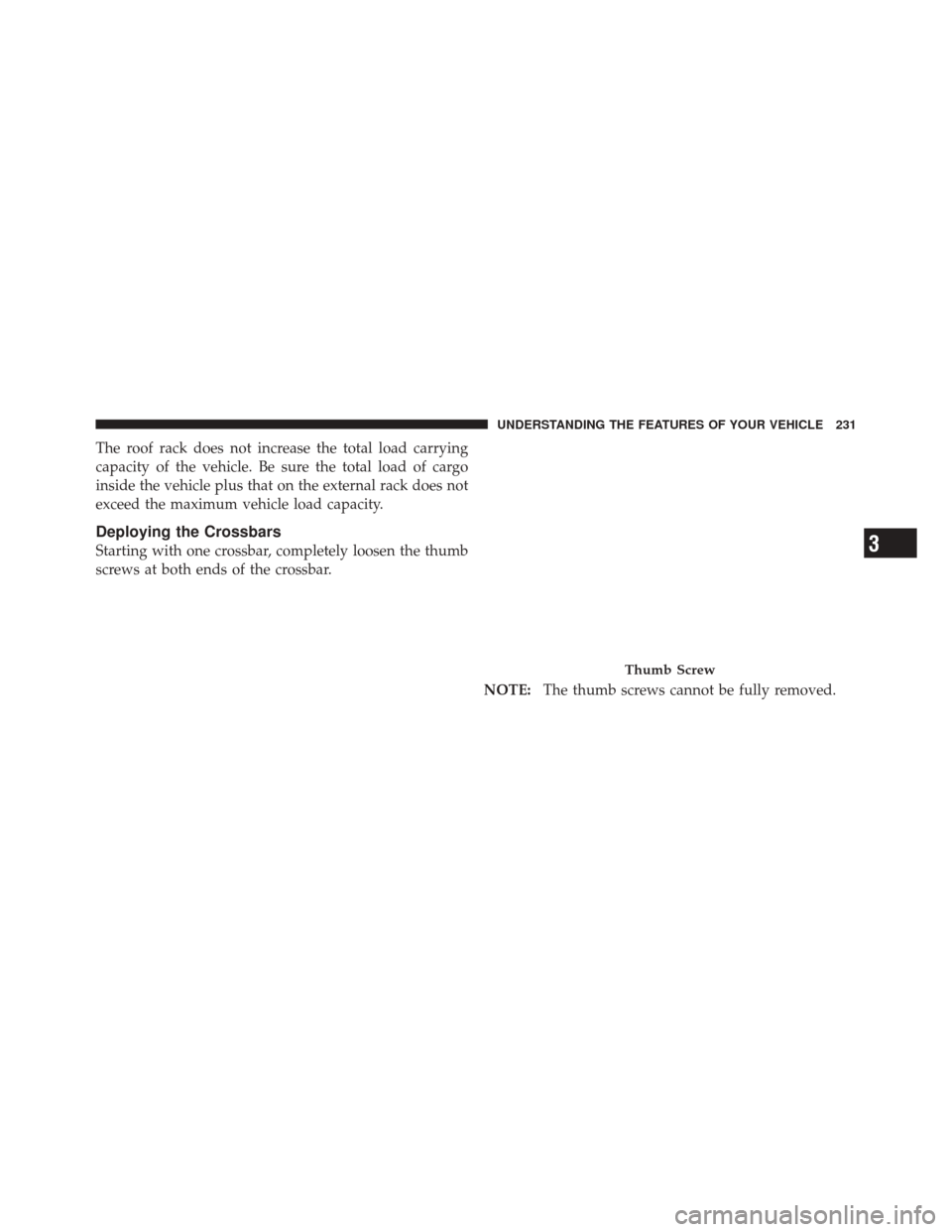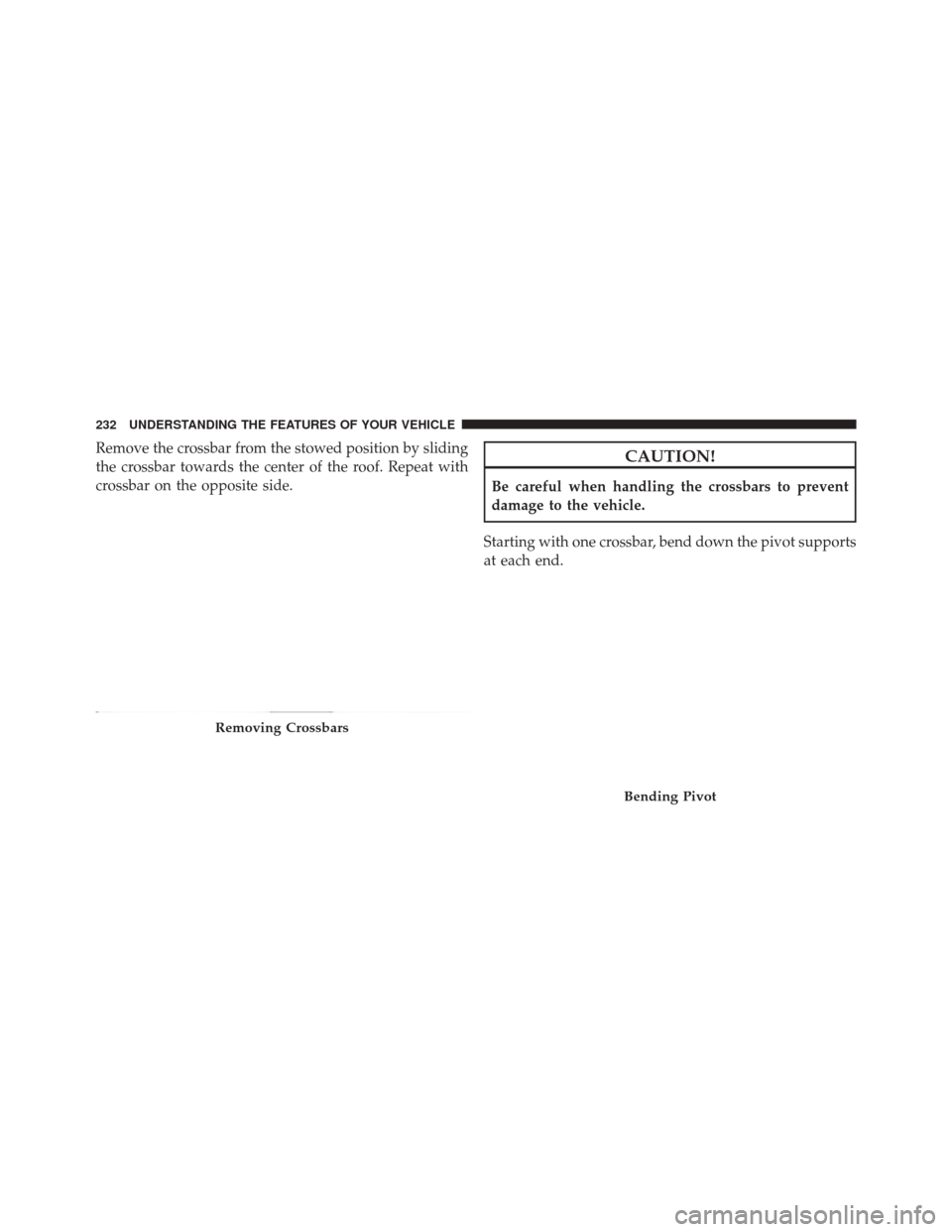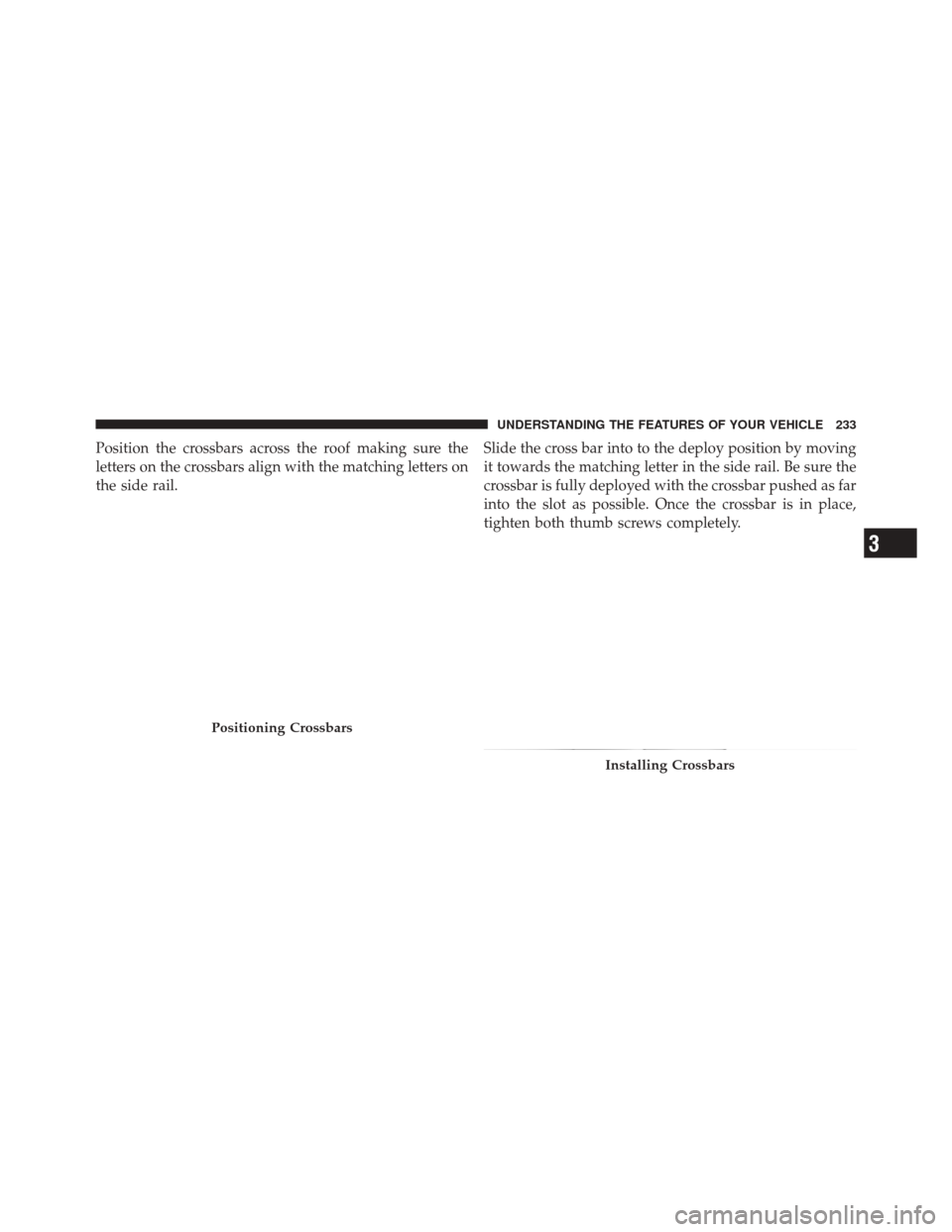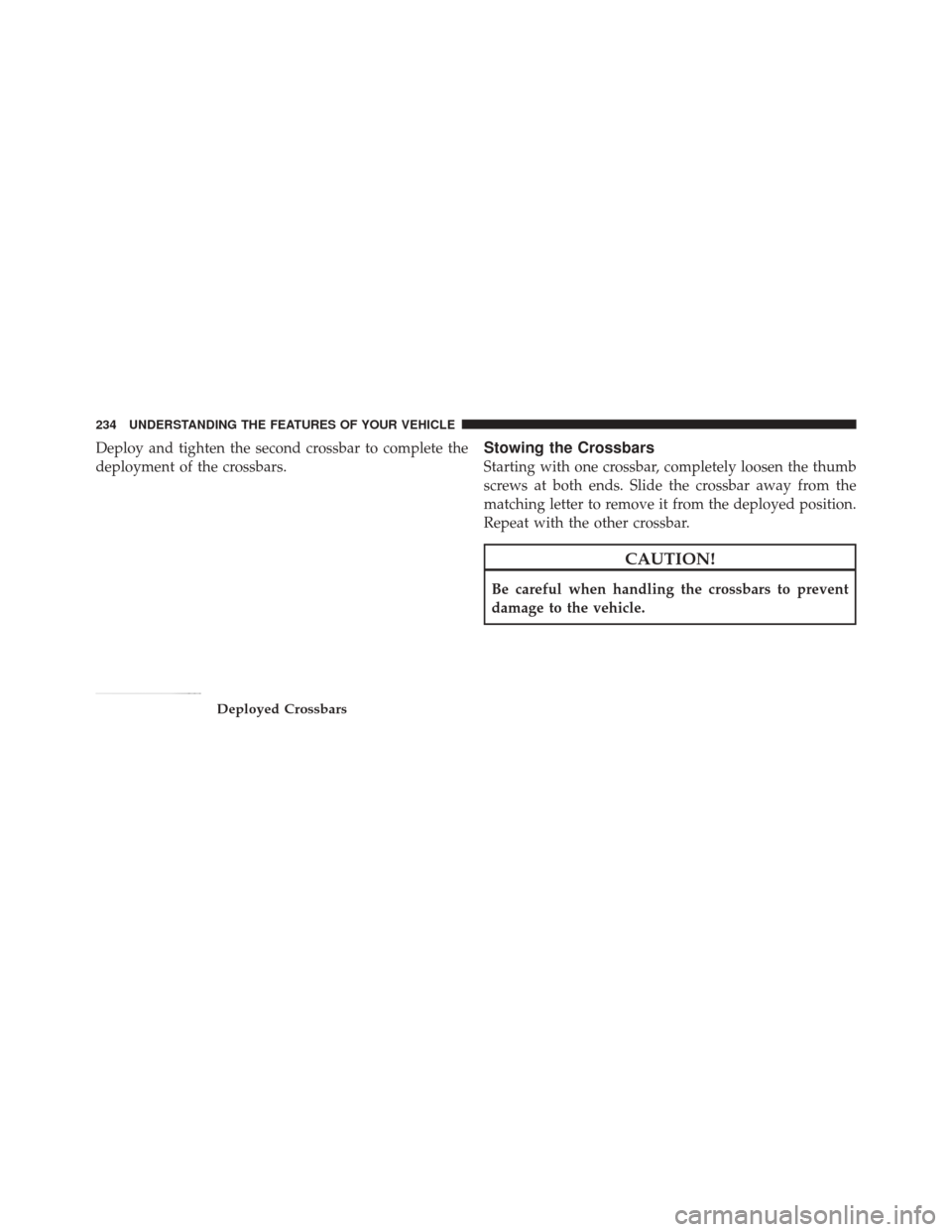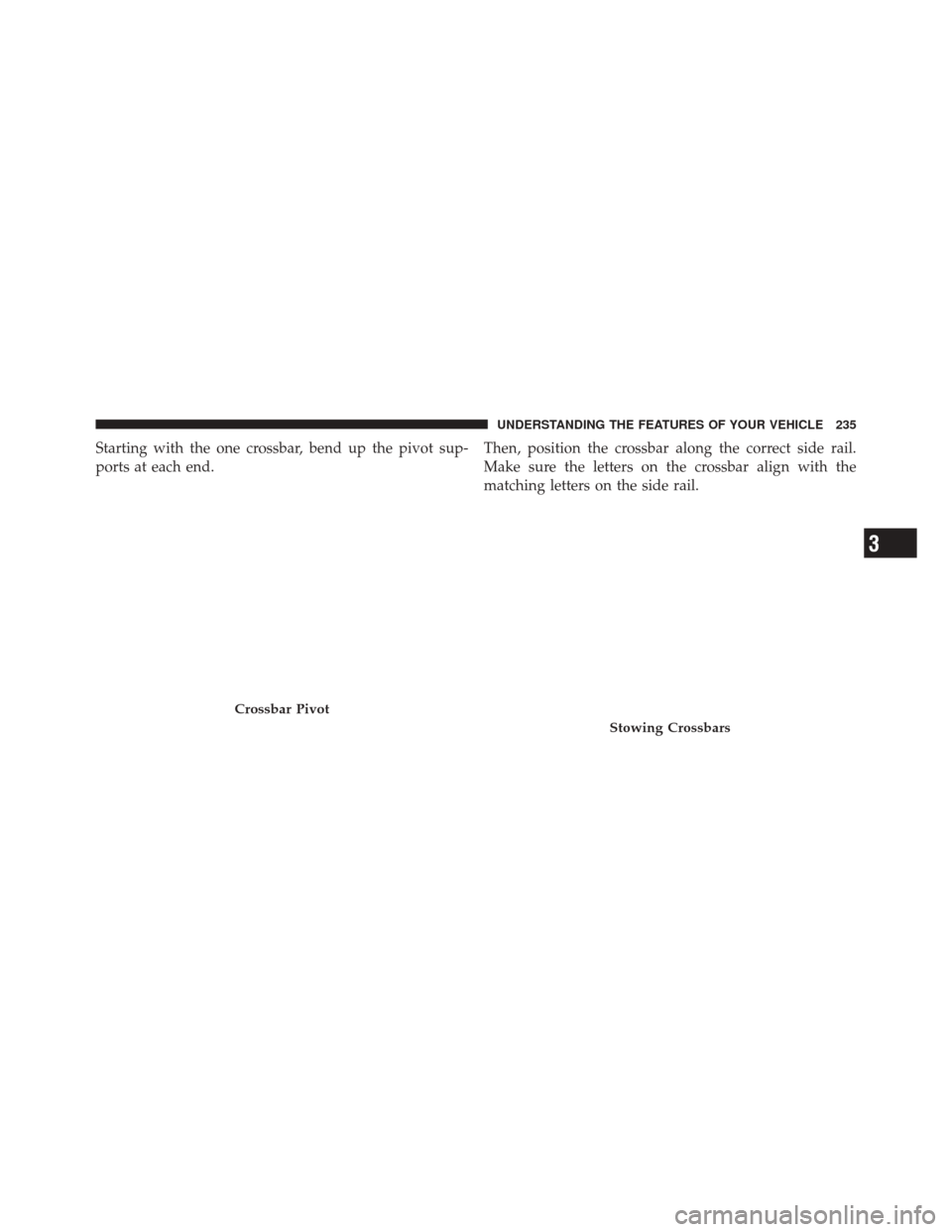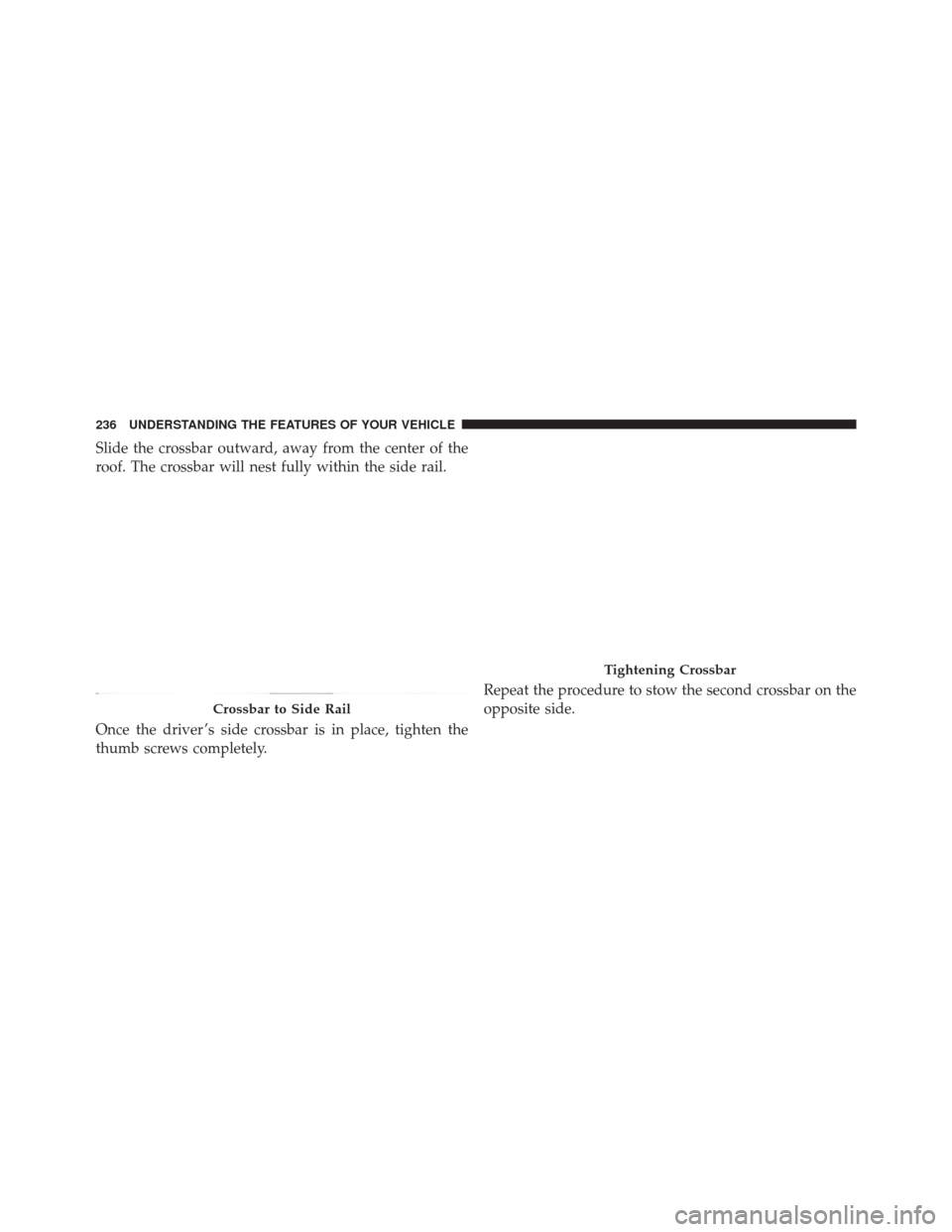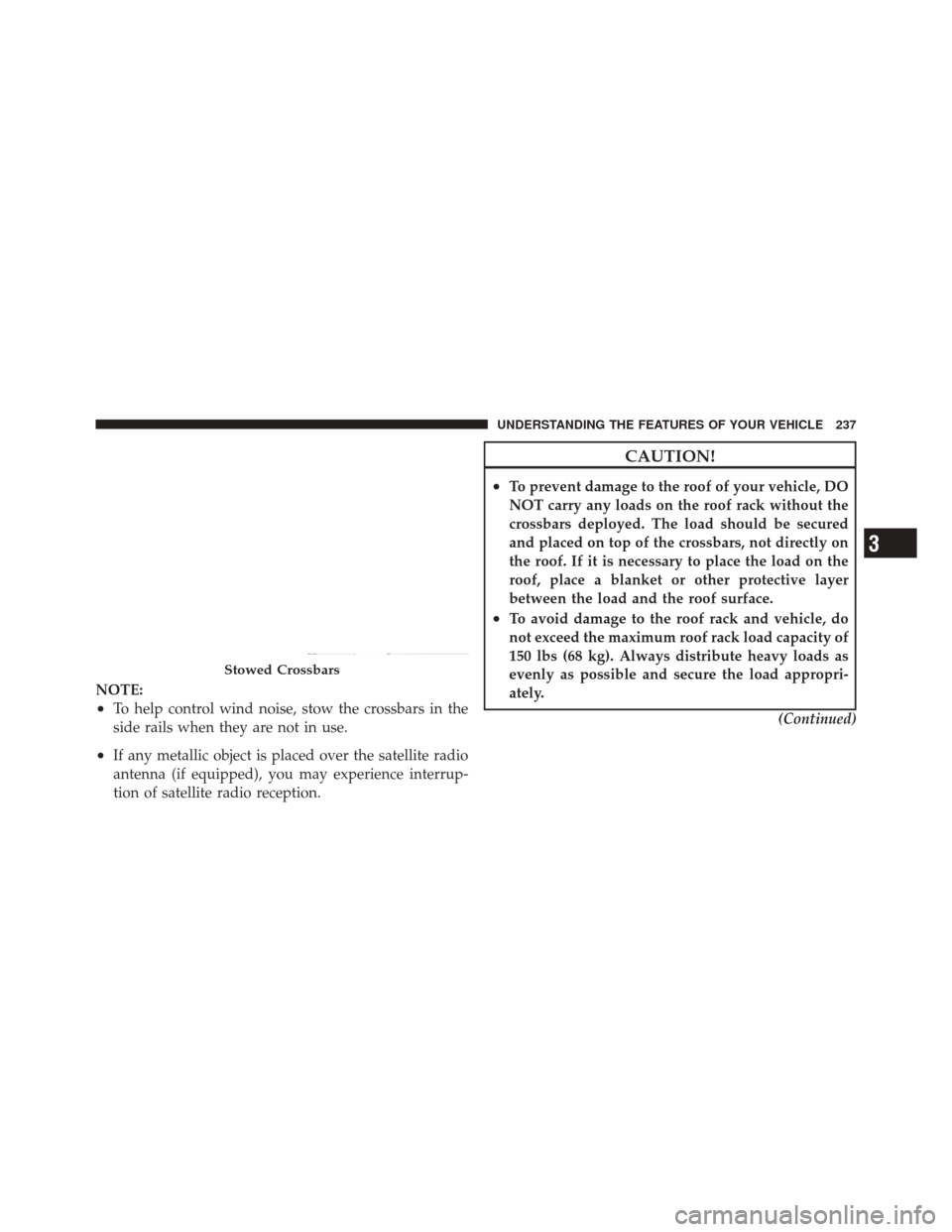DODGE DURANGO 2011 3.G Owners Manual
DURANGO 2011 3.G
DODGE
DODGE
https://www.carmanualsonline.info/img/12/5609/w960_5609-0.png
DODGE DURANGO 2011 3.G Owners Manual
Trending: headlamp, CD player, service schedule, washer fluid, child restraint, fog light bulb, lock
Page 231 of 576
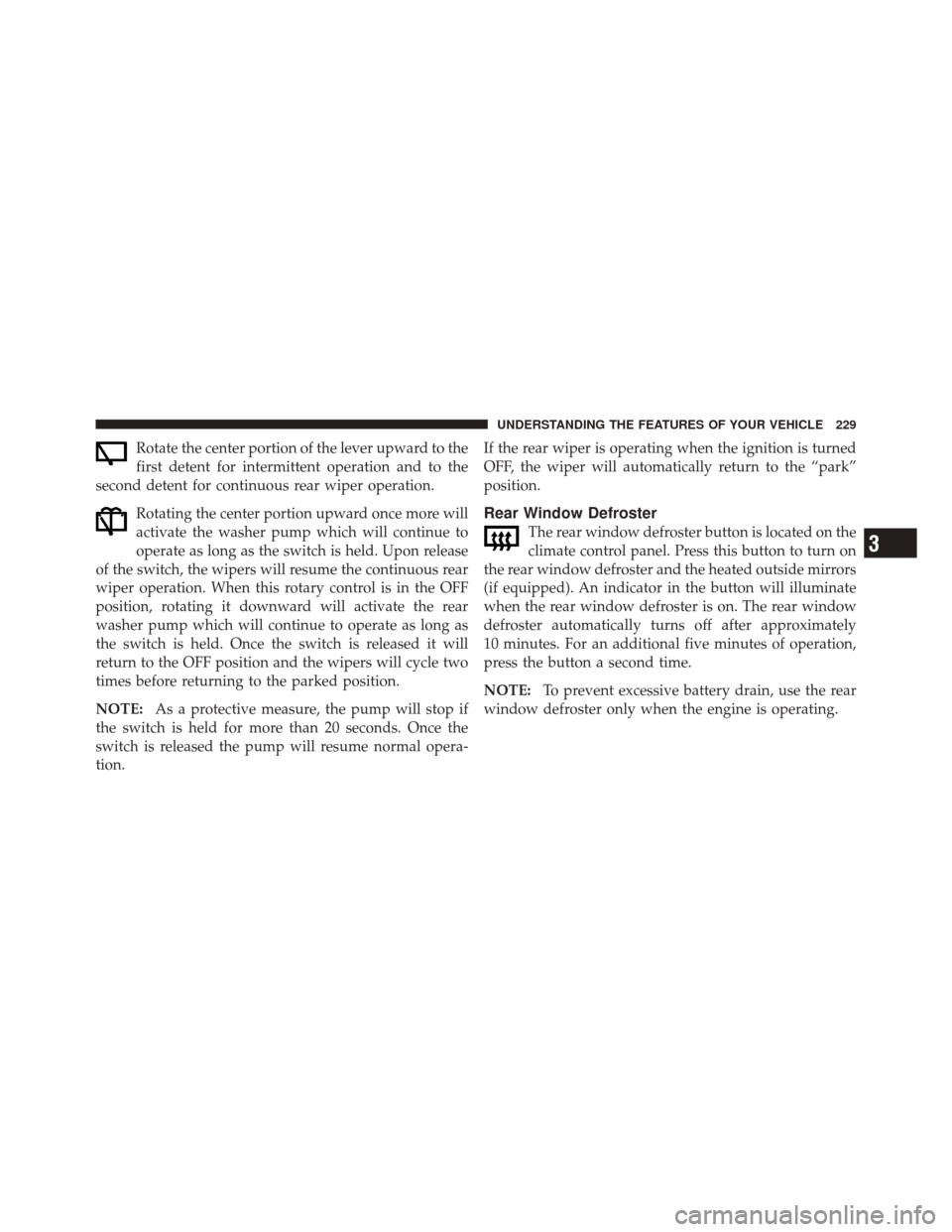
Rotate the center portion of the lever upward to the
first detent for intermittent operation and to the
second detent for continuous rear wiper operation.
Rotating the center portion upward once more will
activate the washer pump which will continue to
operate as long as the switch is held. Upon release
of the switch, the wipers will resume the continuous rear
wiper operation. When this rotary control is in the OFF
position, rotating it downward will activate the rear
washer pump which will continue to operate as long as
the switch is held. Once the switch is released it will
return to the OFF position and the wipers will cycle two
times before returning to the parked position.
NOTE: As a protective measure, the pump will stop if
the switch is held for more than 20 seconds. Once the
switch is released the pump will resume normal opera-
tion. If the rear wiper is operating when the ignition is turned
OFF, the wiper will automatically return to the “park”
position.
Rear Window Defroster
The rear window defroster button is located on the
climate control panel. Press this button to turn on
the rear window defroster and the heated outside mirrors
(if equipped). An indicator in the button will illuminate
when the rear window defroster is on. The rear window
defroster automatically turns off after approximately
10 minutes. For an additional five minutes of operation,
press the button a second time.
NOTE: To prevent excessive battery drain, use the rear
window defroster only when the engine is operating.3
UNDERSTANDING THE FEATURES OF YOUR VEHICLE 229
Page 232 of 576
CAUTION!
Failure to follow these cautions can cause damage to
the heating elements:
•Use care when washing the inside of the rear
window. Do not use abrasive window cleaners on
the interior surface of the window. Use a soft cloth
and a mild washing solution, wiping parallel to
the heating elements. Labels can be peeled off
after soaking with warm water.
•Do not use scrapers, sharp instruments, or abra-
sive window cleaners on the interior surface of the
window.
•Keep all objects a safe distance from the window.
ROOF LUGGAGE RACK — IF EQUIPPED
The crossbars and side rails are designed to carry weight
on vehicles equipped with a luggage rack.The load must
not exceed 150 lbs (68 kg), and should be uniformly distributed over the luggage rack crossbars.
The crossbars on your vehicle are delivered stowed
within the roof rack side rails. Crossbars should always
be used whenever cargo is placed on the roof rack. Check
the straps frequently to be sure that the load remains
securely attached.
1 — Side Rail
2 — Crossbar
230 UNDERSTANDING THE FEATURES OF YOUR VEHICLE
Page 233 of 576
The roof rack does not increase the total load carrying
capacity of the vehicle. Be sure the total load of cargo
inside the vehicle plus that on the external rack does not
exceed the maximum vehicle load capacity.
Deploying the Crossbars
Starting with one crossbar, completely loosen the thumb
screws at both ends of the crossbar.NOTE:The thumb screws cannot be fully removed.
Thumb Screw
3
UNDERSTANDING THE FEATURES OF YOUR VEHICLE 231
Page 234 of 576
Remove the crossbar from the stowed position by sliding
the crossbar towards the center of the roof. Repeat with
crossbar on the opposite side.CAUTION!
Be careful when handling the crossbars to prevent
damage to the vehicle.
Starting with one crossbar, bend down the pivot supports
at each end.
Removing Crossbars
Bending Pivot
232 UNDERSTANDING THE FEATURES OF YOUR VEHICLE
Page 235 of 576
Position the crossbars across the roof making sure the
letters on the crossbars align with the matching letters on
the side rail.Slide the cross bar into to the deploy position by moving
it towards the matching letter in the side rail. Be sure the
crossbar is fully deployed with the crossbar pushed as far
into the slot as possible. Once the crossbar is in place,
tighten both thumb screws completely.
Positioning Crossbars
Installing Crossbars
3
UNDERSTANDING THE FEATURES OF YOUR VEHICLE 233
Page 236 of 576
Deploy and tighten the second crossbar to complete the
deployment of the crossbars.Stowing the Crossbars
Starting with one crossbar, completely loosen the thumb
screws at both ends. Slide the crossbar away from the
matching letter to remove it from the deployed position.
Repeat with the other crossbar.
CAUTION!
Be careful when handling the crossbars to prevent
damage to the vehicle.
Deployed Crossbars
234 UNDERSTANDING THE FEATURES OF YOUR VEHICLE
Page 237 of 576
Starting with the one crossbar, bend up the pivot sup-
ports at each end.Then, position the crossbar along the correct side rail.
Make sure the letters on the crossbar align with the
matching letters on the side rail.
Crossbar Pivot
Stowing Crossbars
3
UNDERSTANDING THE FEATURES OF YOUR VEHICLE 235
Page 238 of 576
Slide the crossbar outward, away from the center of the
roof. The crossbar will nest fully within the side rail.
Once the driver ’s side crossbar is in place, tighten the
thumb screws completely.Repeat the procedure to stow the second crossbar on the
opposite side.
Crossbar to Side Rail
Tightening Crossbar
236 UNDERSTANDING THE FEATURES OF YOUR VEHICLE
Page 239 of 576
NOTE:
•To help control wind noise, stow the crossbars in the
side rails when they are not in use.
•If any metallic object is placed over the satellite radio
antenna (if equipped), you may experience interrup-
tion of satellite radio reception.
CAUTION!
•To prevent damage to the roof of your vehicle, DO
NOT carry any loads on the roof rack without the
crossbars deployed. The load should be secured
and placed on top of the crossbars, not directly on
the roof. If it is necessary to place the load on the
roof, place a blanket or other protective layer
between the load and the roof surface.
•To avoid damage to the roof rack and vehicle, do
not exceed the maximum roof rack load capacity of
150 lbs (68 kg). Always distribute heavy loads as
evenly as possible and secure the load appropri-
ately.(Continued)
Stowed Crossbars
3
UNDERSTANDING THE FEATURES OF YOUR VEHICLE 237
Page 240 of 576
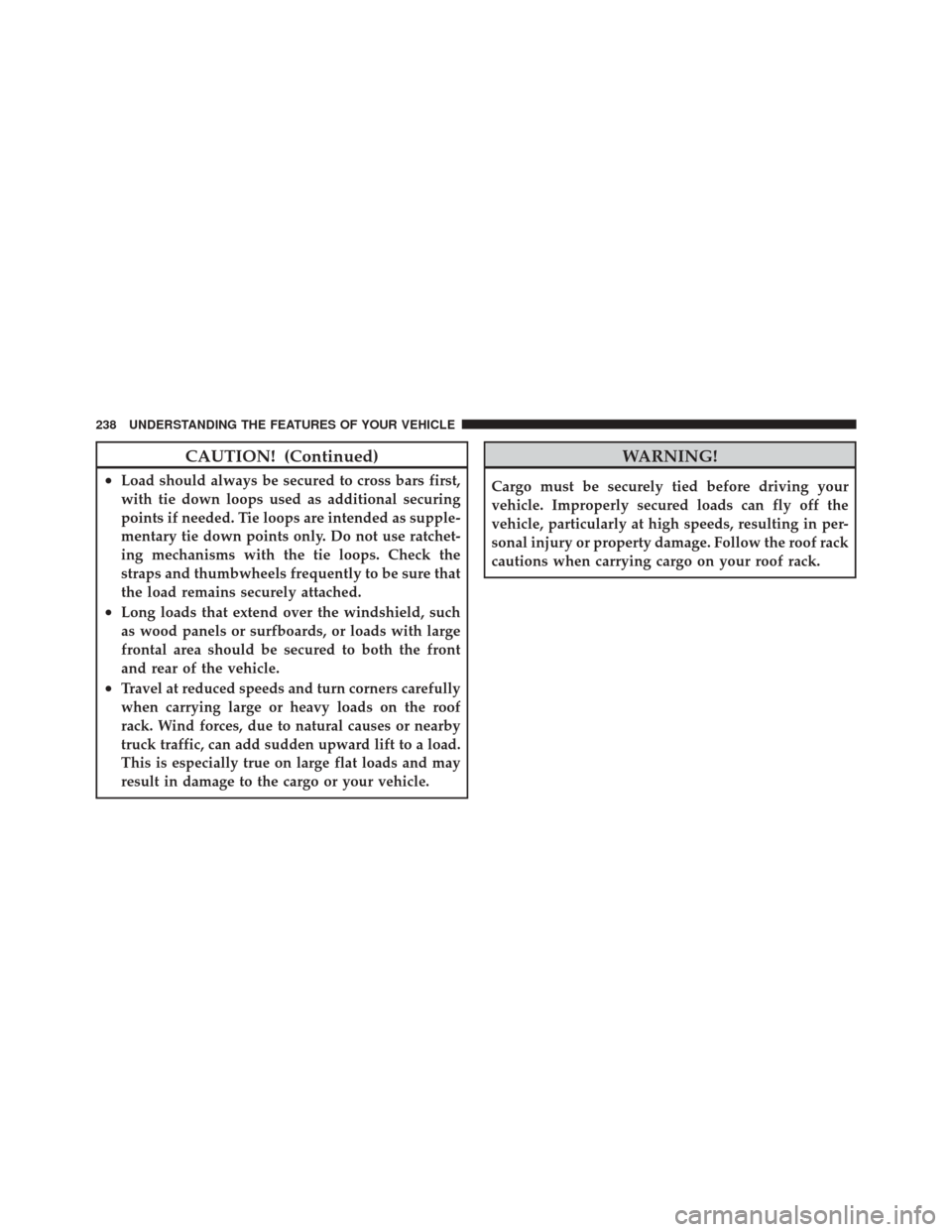
CAUTION! (Continued)
•Load should always be secured to cross bars first,
with tie down loops used as additional securing
points if needed. Tie loops are intended as supple-
mentary tie down points only. Do not use ratchet-
ing mechanisms with the tie loops. Check the
straps and thumbwheels frequently to be sure that
the load remains securely attached.
•Long loads that extend over the windshield, such
as wood panels or surfboards, or loads with large
frontal area should be secured to both the front
and rear of the vehicle.
•Travel at reduced speeds and turn corners carefully
when carrying large or heavy loads on the roof
rack. Wind forces, due to natural causes or nearby
truck traffic, can add sudden upward lift to a load.
This is especially true on large flat loads and may
result in damage to the cargo or your vehicle.
WARNING!
Cargo must be securely tied before driving your
vehicle. Improperly secured loads can fly off the
vehicle, particularly at high speeds, resulting in per-
sonal injury or property damage. Follow the roof rack
cautions when carrying cargo on your roof rack.
238 UNDERSTANDING THE FEATURES OF YOUR VEHICLE
Trending: lock, emergency towing, oil viscosity, transmission oil, turn signal bulb, air condition, warning lights


